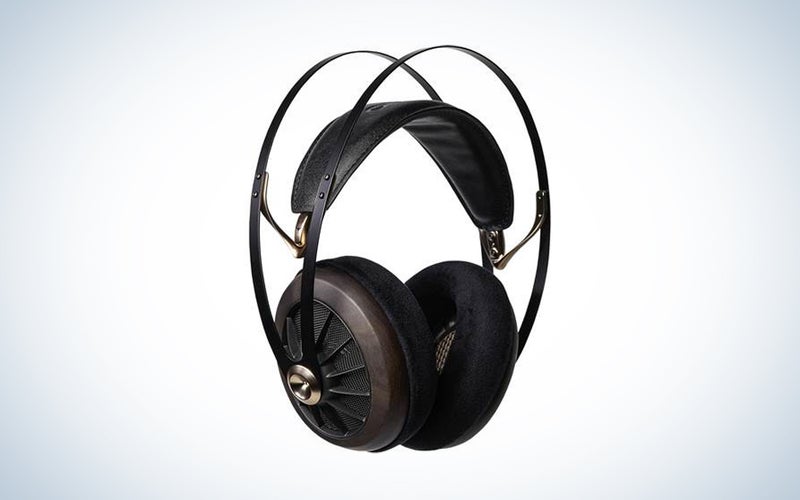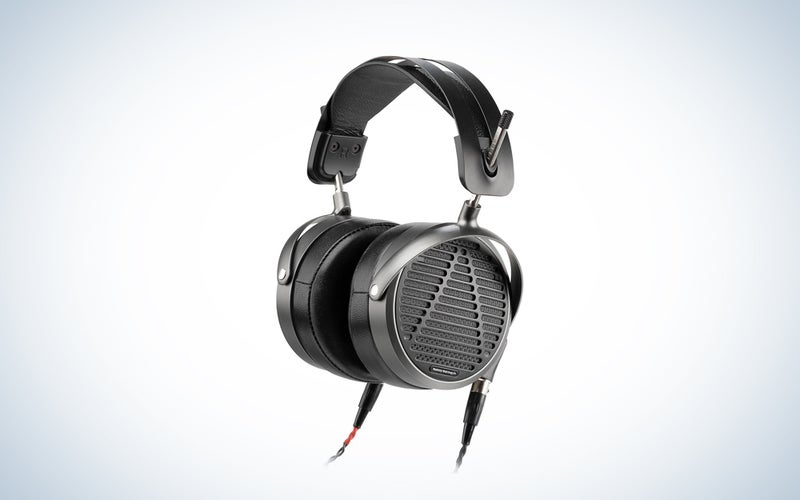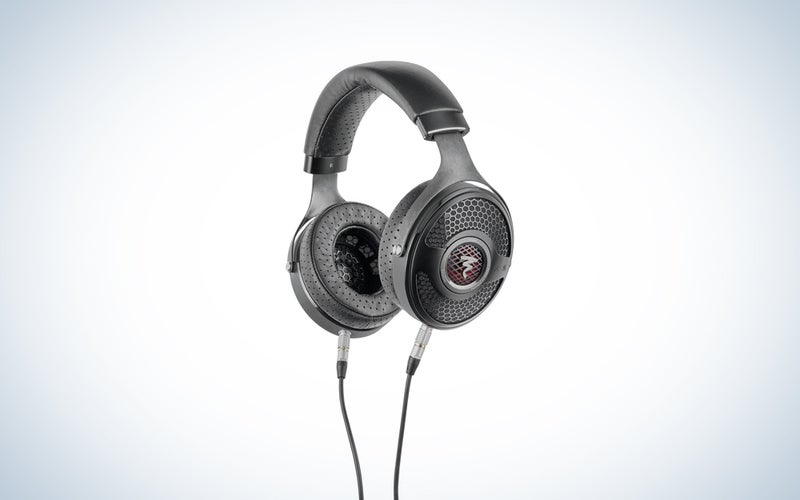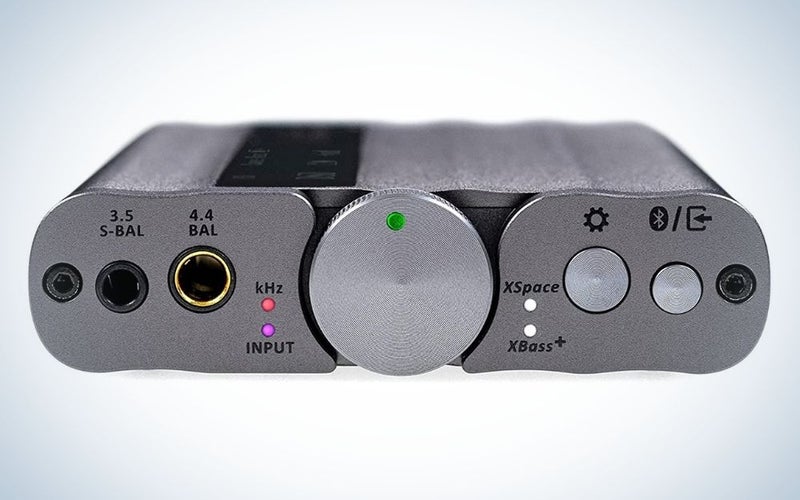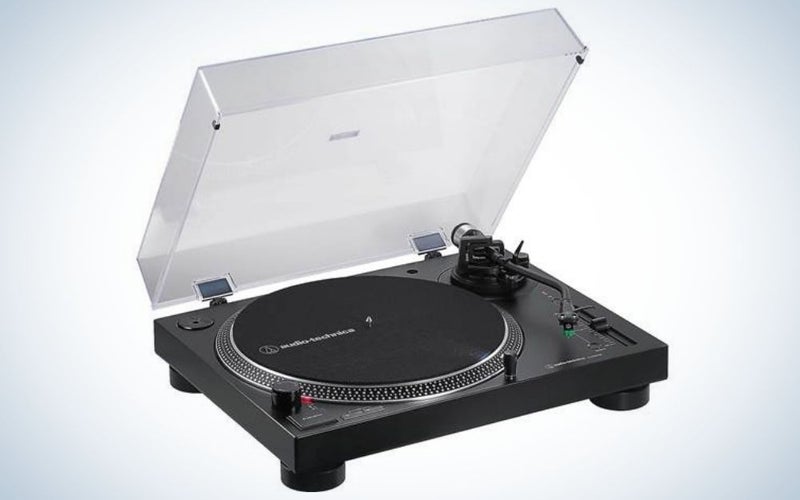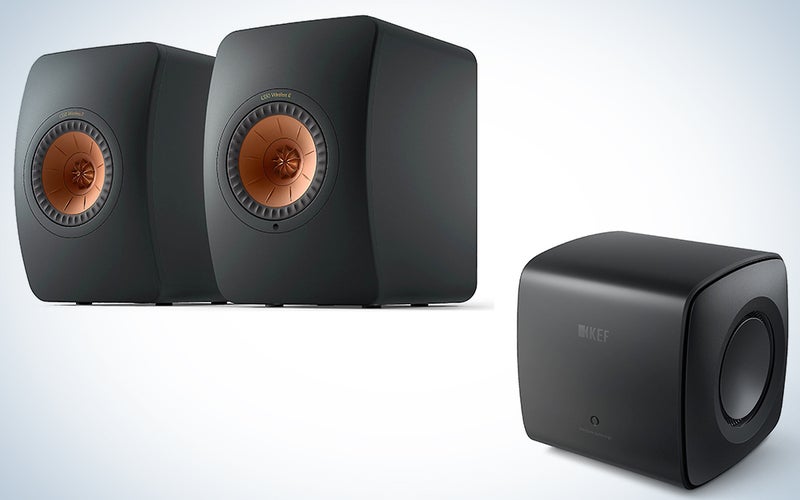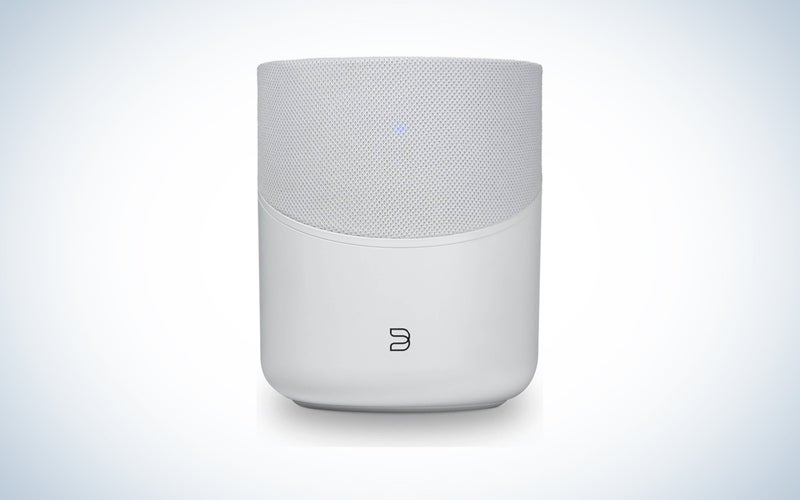Last-minute gifts for the serious audiophile in your life
Some of these items can still ship free for Christmas Eve delivery, if you act ASAP, and are eligible for paid overnight shipping otherwise.
We may earn revenue from the products available on this page and participate in affiliate programs. Learn more ›
- Best bang-for-the-buck headphones: Meze Audio 109 PRO
- Best professional-grade headphones: Audeze MM-500 Planar-Magnetic Headphones
- Best summit-fi headphones: Focal Utopia 2022
- Best portable DAC/amp: iFi xDSD Gryphon
- Best Bluetooth turntable: Audio-Technica AT-LP120XBT-USB Manual Direct-Drive Turntable
- Best powered stereo speakers: KEF LS50 Wireless II + KC62 Subwoofer
- Best compact connected speaker: Bluesound PULSE M
Best bang-for-the-buck headphones: Meze Audio 109 PRO
Meze Audio
Since being launched in 2015, the Meze Audio 99 Classics headphones have been a gateway drug to the audiophile addiction because of the immediate rush delivered by the detailed but never-fatiguing sound. Well, that precision-driven high is heightened 10x by the Meze Audio 109 PRO, one of the all-star introductions of 2022 for its comfortable balance of euphoria and technicalities. A dynamic, open-backed headphone, the 109 PRO shares the design language and agreeable ergonomics of its sibling but refines and reinforces the organic texturing and warm but never congested bass response thanks to a new beryllium-coated polymer + cellulose-carbon driver in the sustainably harvested walnut ear cups. Punchy with panache that performs well above its $799 price point, the 109 PRO can be another flavor to some and end-game to others, able to please an audiophile regardless of experience.
Best professional-grade headphones: Audeze MM-500 Planar-Magnetic Headphones
Audeze
Know someone with a home studio that wishes they could work on their mixes more but is worried about disturbing housemates or neighbors? But they’re also just a music lover in general? Audeze—the Southern California-based headphone designers that probably did the most to popularize planar-magnetic headphones—has introduced what amounts to a set of portable, personal near-field studio monitors in 2022. And they’re equally amazing for less analytical, more leisurely listening—especially with vocal material. Developed with renowned mix engineer Manny Marroquin, the $1,699 MM-500 feels solid in the hand but not excessive on the head. And, once music starts playing, it’s like the headphone itself isn’t even there—the song laid out before you without ever being overly diffuse, perfectly poised for a scintillating playback session or identifying where to apply that last little bit of EQ glue. Thanks to the lithe transients, spacious midrange, and energetic bass of its orthodynamic drivers, the MM-500 headphones can be both a daily driver and a sonic scalpel as it makes music more approachable and more transparent. It’s an imminently pleasuring, natural not just neutral response. (And, if you’re looking for something portable and potent, the Audeze Euclid is the best planar-magnetic in-ear monitor you can gift before going all-in on something custom like the superlative Campfire Supermoon. And both of these take on even more life/reveal even more layers when paired with the XBass II and XSpace processing of the iFi xDSD Gryphon, featured below.)
Best summit-fi headphones: Focal Utopia 2022 Headphones
Focal
Suppose someone you love is looking to replicate the indulgence of a luxury listening station. In that case, the Focal Utopia headphones are as close to a pair of freestanding loudspeakers as you can slap on a head. These flagship open-back over-the-ear headphones produce an ultrawide frequency response and holographic imaging with startling realism thanks to 40mm M-shaped beryllium drivers inspired by high-end audiophile towers. Soft lambskin earcups and headphone padding make these headphones feel as good as they sound. As we said in our best headphones roundup, the Focal Utopia 2020 (still a compelling buy at its $3,399 “closeout” price) is “the idyll ideal—impressing not with its sheer power, but with its absolute prowess.” And the $4,999 2022 model further enhances the emotional resonance while reducing the detrimental vibrations. Both highs and lows are extended without reduced focus or lightning-quick finesse, especially when paired with a DAC/amp such as the Naim Uniti Atom Headphone Edition.
Best portable DAC/amp: iFi xDSD Gryphon
iFi Audio
Those new ‘cans can’t showcase their best without proper power, which can be difficult to get on the go … difficult, that is, if someone doesn’t have the iFi xDSD Gryphon. The magic of the Gryphon lies in its versatility, which more than justifies its $599 price. You can cut the cord and use it, when fully charged, for up to 8 hours on the go with Bluetooth streaming over SBC, AAC for iOS, and up to 96kHz using LDAC, LHDC/HWA, or aptX HD/Adaptive on Android devices. Or you plug it in via USB, Coax, or Optical and ensure that no audio bit gets adulterated by wireless compression. Once you’re listening, you can enhance bass and/or upper midrange presence, as well as soundstage with iFi’s innovative XBass II and XSpace analog enhancements. Connected to your PC over USB-C, it will act as an external soundcard, eliminating the need for a dedicated desk setup—perfect with headphones and, when the Gryphon accepts a digital source, ports on the back can even be used to feed an external amp or powered monitors. The tremendous 1000mW @ 32 ohms of power on offer over its balanced connection also means this DAC can drive even very demanding headphones. The single-ended connection is much more limited at 320mW but is still enough to drive the vast majority of cans available today. And if you’re a fan of sensitive in-ear monitors (IEMs), don’t worry. The Gryphon also offers an iEMatch mode (assignable to either output) to prevent hiss from invading your favorite tracks, while maintaining dynamics.
Best Bluetooth turntable: Audio-Technica AT-LP120XBT-USB Manual Direct-Drive Turntable
Audio-Technica
Audiophiles don’t emerge like Athena, fully formed from another’s headspace and innately imbued with wisdom. No, they must be nurtured and taught the ins and outs of signal-chain foibles. And they’re not all going to have the space or inclination to start stacking components. A great entry point for the budding music-first audiophile is a turntable packed with connectivity options. The $399 Audio-Technica AT-LP120XBT-USB—featuring a high-torque DC servo direct-drive motor with selectable 33-1/3, 45, or 78 rpm speeds—is compatible with virtually any music system, thanks to its variety of outputs, both digital and analog. On the digital side, you can pair the turntable via aptX with Bluetooth speakers, headphones, or DAC/amps like the Gryphon above. Listeners can also use the USB port for copying your albums digitally to a computer. In the analog domain, the built-in preamp allows you to connect the turntable to line-level inputs on a preamp or receiver. You can also bypass the preamp to connect to an external unit. Thanks to its multiplicity of output types, the AT-LP120XBT-USB is a turntable you can hold onto as you amass a rig and bank account more in line with boutique turntables that cost in the multi-thousands. If you’re more concerned with budget, maybe because you’re gifting a teen their first turntable, Audio-Technica also offers a more affordable belt-driven Bluetooth option, the AT-LP60XBT-BK.
Best streaming speakers: KEF LS50 Wireless II + KC62 Subwoofer
KEF
If you want to give someone sonic depth without a deep footprint, package the KEF LS50 Wireless II standmount speakers with the KC62 subwoofer. The dual 6-inch woofers in the improbably small sealed subwoofer couple perfectly to one of our top powered speakers, an effortlessly integrated component capable of bringing a wide sweet spot to a small room. KEF’s striking, copper-hued Uni-Q driver—backed by Metamaterial Absorption Technology to reduce unwanted reflections and distortion—orients a 1-inch vented aluminum-dome tweeter in the acoustic center of a 5 ¼-inch magnesium-aluminum alloy woofer cone to create a wide listening sweet spot. A bass-reflex cabinet with elliptical rear ports is designed to maximize accurate, musical low end. And those bass notes can reach as low as 11Hz once handed off seamlessly via DSP to the KC62, opening the LS50’s headroom to soar. Plus, copious connectivity (Spotify to TIDAL to Apple Music; AirPlay 2, Google ChromeCast, and Roon to Optical, Coaxial, and HDMI, plus more) means you’ll never want for showcase sounds. At a little under $4,000 for the pair, it’s not a cheap set-up, but its wow factor is priceless.
Suppose you’re looking just for bookshelf speakers that still offer plenty of lows and hi-fi pedigree. In that case, we recommend the JBL 4305P ($2,200/pair), which debuted at CES in January 2022 and is the first powered model in its consumer Studio Monitor series. This fully loaded speaker features a 45-25,000 Hz frequency response, built-in Class D amplification, 24-bit/192 kHz converters, and six audio inputs that can connect to a huge range of digital and analog sources to provide comprehensive, hi-res wired and wireless connectivity. Each speaker features a 2410H-2 1-inch compression driver mated to a High-Definition Imaging horn for crystal-clear highs and lifelike dynamics. A 5.25-inch cast-frame, fiber-composite cone woofer operates in a bass-reflex configuration with dual front-firing tuned ports. The end result is the lively dynamics expected from a horn-guided tweeter presented with punchy authority, especially in its beefy midrange, that’s not surprising for a company with heritage firmly entrenched in both control rooms and live sound reinforcement. When it comes to high-res streaming, the 4305P takes quality to the next level, thanks to an integrated streaming engine that provides wired and wireless network audio capabilities via Ethernet, Google Chromecast Built-in, Apple AirPlay 2, and Bluetooth 5.1, combo XLR and ¼-inch TRS phono connectors, asynchronous USB and optical digital inputs and a 3.5mm analog in.
Best compact smart speaker: Bluesound PULSE M
Bluesound
So far, we’ve suggested lots of gear for an optimized listening station. But maybe you are shopping for someone interested in a multiroom set-up. A great place to start is any place with the $449 Bluesound PULSE M, a compact cylinder of a speaker that runs off BluOS, letting it stream music from a myriad of sources over Wi-Fi. Whether in the corner of a kitchen counter or on a bedside table, the PULSE M’s upward-firing woofer and dual tweeters (angled outward 45 degrees) disperse a surprisingly expressive, expansive soundstage considering its more diminutive dimensions. Pair two in parallel and you can have a wider, true stereo setup, or put them throughout a home and organize them by zones to handoff audio just to the speaker where the listener is or broadcast the same track throughout all rooms. (You can integrate these with any speaker system running BluOS; for example, augment them with the Bluesound PULSE SUB+, put them as rear channels with the $999 Bluesound PULSE SOUNDBAR+, or use them on the same network as the $1,499 PSB Alpha iQ stereo speakers, if you want something more powerful.) AirPlay 2 or aptX HD Bluetooth let you stream directly to the PULSE M (from, say, a Bluetooth turntable like we recommended above), plus the PULSE M has a USB-A port for connecting file-filled thumb drives and a 3.5mm dual analog/digital input for connecting a source with an aux cable.
